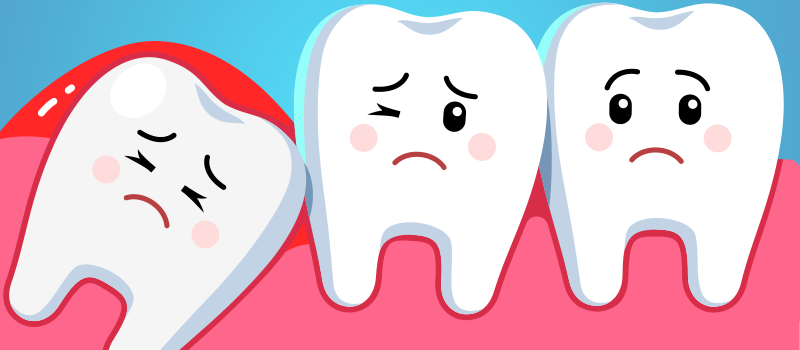What’s the Buzz
The Bee Healthy Blog
How Does Laughing Gas (Nitrous Oxide) Work?

Nitrous oxide, commonly referred to as laughing gas, is used during many dental procedures to reduce pain and anxiety. In this article, we will take a look at how nitrous oxide can work to alleviate pain and anxiety during dental treatment.
What is nitrous oxide?
Nitrous oxide is a colorless, odorless chemical compound (gas) that was discovered by Horace Wells in the 18th century. It contains two molecules of nitrogen and one molecule of oxygen and has the chemical formula N2O.
Nitrous oxide is a mild anesthetic. It is used for pain relief during general dentistry procedures. It can also help people who feel anxious during dental work stay relaxed.
Note that nitrous oxide is different from nitric oxide which contains three molecules of nitrogen and one molecule of oxygen.
What does nitrous oxide do in the body?
The exact mechanism by which nitrous oxide works is unclear. Current evidence suggests that nitrous oxide is involved in regulating ligand-gated ion channels. These transmembrane ion channel proteins allow ions like sodium (Na+), potassium (K+), chlorine (Cl), and calcium (Ca2+) to pass through cell membranes when they open in response to chemical messengers called ligands.
In simple words, nitrous oxide affects the flow of ions across cell membranes, and in this way, it affects chemical messengers or neurotransmitters in the body.
The anti-anxiety effects of nitrous oxide occur because of its action on GABA receptors which block certain neurotransmitters in the nervous system. The analgesic (pain-reducing) effect of nitrous oxide is due to its activity on a chemical messenger in the brain called norepinephrine. The release of norepinephrine inhibits pain signaling in the body. Finally, nitrous oxide produces a euphoric feeling by stimulating the reward pathways in the brain and leading to the release of a chemical messenger called dopamine.
Why is nitrous oxide (laughing gas) useful during a dental procedure?
Nitrous oxide or laughing gas is a mild anesthetic that has no color or odor. Using nitrous oxide is common during dental treatments because it works quickly. Also, the effects are reversed within a short period after the gas is turned off. Last but not least, nitrous oxide does not have any adverse effects on vital organs such as the heart, lungs, brain, or liver.
Why take nitrous oxide?
Medical professionals may recommend inhaling nitrous oxide to help you relax and remain calm during dental treatment. It can reduce dental anxiety by creating a euphoric feeling. Nitrous oxide also helps by reducing pain and keeping you more comfortable during dental work such as a tooth extraction.
How is nitrous oxide given?
Nitrous oxide is given through a nasal hood or mask that fits closely over your nose. Dentists have several gas canisters available in their clinic and can adjust the amount of nitrous oxide and oxygen you inhale.
All you have to do is breathe normally. The odorless, colorless gas will reach your brain within a few seconds and start working on the opioid receptors (pain receptors) to reduce pain within 2-3 minutes of inhalation.
What does nitrous oxide feel like?
Some people report a slightly metallic taste, while others report nitrous oxide has a sweet taste. After you breathe in the gas, you will feel calm and slightly lightheaded. It is also normal to experience a slight tingling sensation in your arms and legs or a floating or vibrating sensation. Different people can have different reactions, such as feeling warm, fuzzy, sleepy, or euphoric.
The amount of sedation you will experience will depend on the amount of nitrous oxide gas you receive. However, nitrous oxide will not make you pass out. You will remain aware of your surroundings and will be able to respond to instructions from your dentist.
What happens after nitrous oxide wears off?
Because nitrous oxide effects wear off quickly, you might need to wear the nasal mask until the treatment is completed.
Once the procedure is completed, you will receive oxygen through the mask. Raising oxygen levels helps flush out any leftover nitrous oxide from your airways and lungs.
You will return to a normal state after the nitrous oxide gas is eliminated from your body. However, there can be lingering effects on consciousness and appetite for a few hours, so you should ask your dentist about what you can eat and whether you can drive after receiving nitrous oxide.
Wrapping Up: Advantages of nitrous oxide gas during dental procedures
Nitrogen oxide or laughing gas is a mild anesthetic that is administered through a mask placed over the patient’s nose. It is easy to breathe in and produces a relaxed feeling and a reduced ability to feel pain during dental treatment.
The analgesic and anti-anxiety effect of nitrous oxide kicks in within a few minutes. The effects of this gas are easily reversed when patients receive pure oxygen at the completion of the procedure.
Nitrous oxide is particularly useful in helping children feel calm during dental treatment as it does not require any injection. The combination of nitrous oxide and oxygen is a safe and effective way of managing pain and anxiety during dental procedures.
References:











SOCIAL